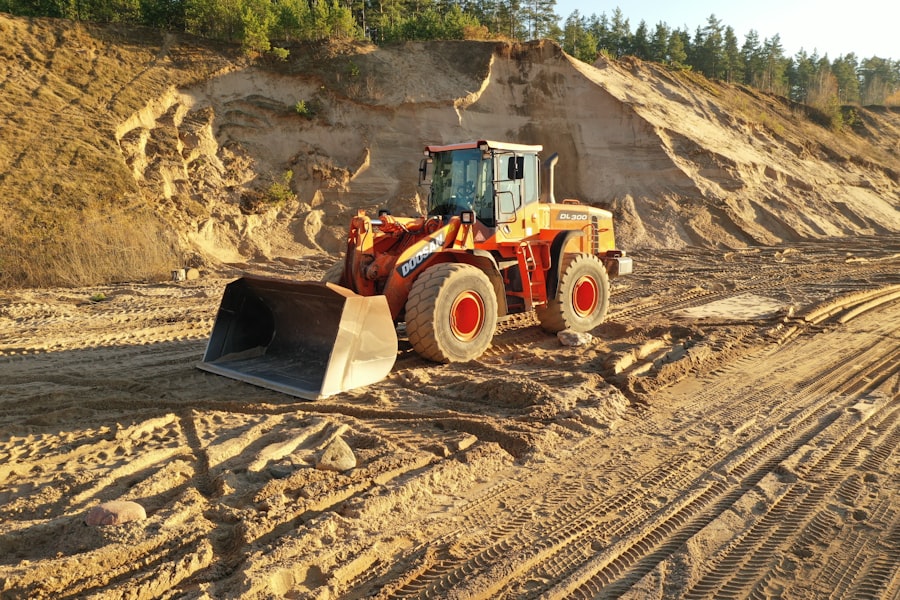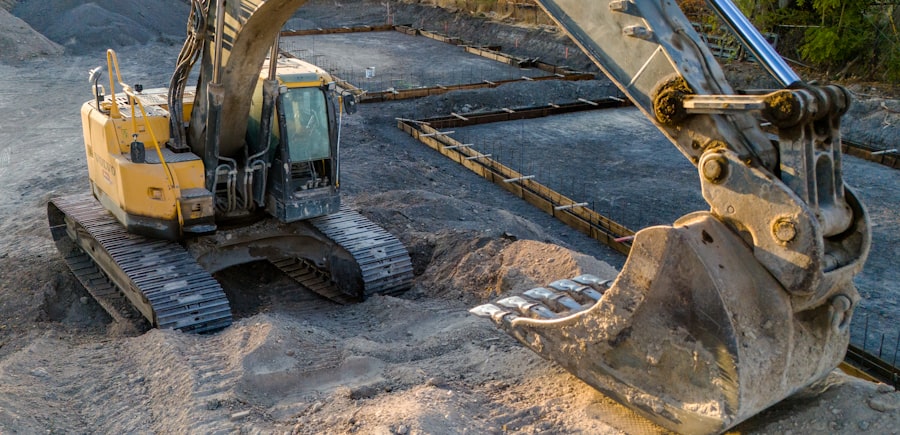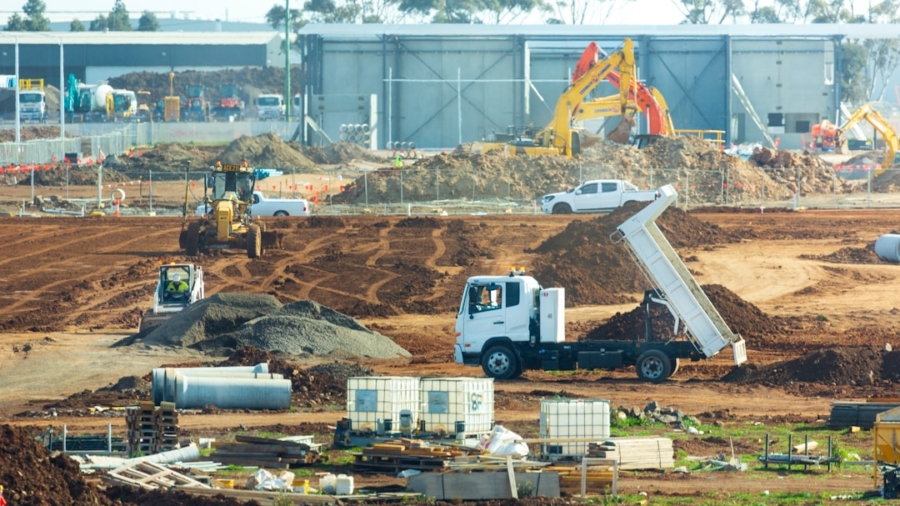The mining industry has long been characterized by its reliance on heavy machinery and human labor, often in challenging and hazardous environments. However, the advent of artificial intelligence (AI) has ushered in a new era of innovation, particularly with the integration of autonomous robots. These AI-powered machines are transforming traditional mining operations by enhancing efficiency, safety, and precision.
As the demand for minerals and resources continues to rise, the need for advanced technologies that can operate in extreme conditions becomes increasingly critical. Autonomous robots equipped with AI capabilities are not only revolutionizing how mining is conducted but also setting new standards for operational excellence. The integration of AI into autonomous robots allows for real-time data processing and decision-making, enabling these machines to navigate complex terrains and perform tasks with minimal human intervention.
From exploration to extraction, AI-powered robots are designed to optimize various stages of the mining process.
As the industry grapples with labor shortages and increasing operational costs, the deployment of these advanced technologies presents a viable solution to meet both economic and environmental challenges.
Key Takeaways
- AI-powered autonomous robots are revolutionizing mining operations by increasing efficiency and safety.
- These robots play a crucial role in exploration and mapping, providing accurate data for decision-making.
- The benefits of using AI-powered autonomous robots in mining include cost reduction, increased productivity, and improved accuracy.
- AI-powered autonomous robots improve safety in mining environments by performing hazardous tasks and reducing human exposure to risks.
- The impact of AI-powered autonomous robots on efficiency and productivity in mining is significant, leading to faster and more precise operations.
The Role of AI-Powered Autonomous Robots in Exploration and Mapping
In the initial stages of mining operations, exploration and mapping are critical for identifying viable sites for resource extraction. Traditional methods often involve extensive manual labor and can be time-consuming, leading to delays in project timelines. AI-powered autonomous robots are changing this landscape by employing advanced sensors and imaging technologies to conduct geological surveys with remarkable speed and accuracy.
These robots can traverse rugged terrains that may be inaccessible to human workers, collecting data on mineral deposits, soil composition, and topographical features. For instance, drones equipped with LiDAR (Light Detection and Ranging) technology can create detailed three-dimensional maps of mining sites, allowing geologists to visualize the landscape and identify potential areas for drilling. The data collected by these autonomous systems can be processed using machine learning algorithms to predict the presence of valuable minerals, significantly reducing the time required for exploration.
Moreover, the ability to continuously monitor changes in the environment enables mining companies to adapt their strategies based on real-time information, ultimately leading to more informed decision-making.
The Benefits of Using AI-Powered Autonomous Robots in Mining Operations

The benefits of integrating AI-powered autonomous robots into mining operations extend beyond mere efficiency; they encompass a wide range of advantages that contribute to the overall success of mining projects. One of the most significant benefits is cost reduction. By automating repetitive tasks such as drilling, hauling, and surveying, companies can minimize labor costs while maximizing output.
Autonomous robots can operate around the clock without the need for breaks or shifts, leading to increased productivity and reduced operational downtime. Additionally, these robots enhance precision in resource extraction. Traditional mining methods often result in over-extraction or under-extraction due to human error or miscalculations.
AI-powered robots utilize advanced algorithms to optimize drilling patterns and extraction techniques, ensuring that resources are harvested more accurately. This precision not only maximizes yield but also minimizes waste, contributing to more sustainable mining practices. Furthermore, the data analytics capabilities of these robots allow for continuous improvement in operational strategies, enabling companies to refine their processes based on historical performance metrics.
How AI-Powered Autonomous Robots Improve Safety in Mining Environments
Safety is a paramount concern in the mining industry, where workers are often exposed to hazardous conditions such as toxic gases, unstable ground, and heavy machinery accidents. The introduction of AI-powered autonomous robots significantly enhances safety protocols by reducing human exposure to dangerous environments. These robots can be deployed in high-risk areas to perform tasks that would otherwise put human lives at risk.
For example, autonomous drones can inspect mine shafts or monitor ventilation systems without endangering workers. Moreover, AI systems can analyze environmental data in real-time to detect potential hazards before they escalate into dangerous situations. For instance, sensors on autonomous vehicles can monitor ground stability and alert operators to any signs of collapse or subsidence.
This proactive approach to safety not only protects workers but also minimizes the likelihood of costly accidents that can disrupt operations and lead to legal liabilities. By leveraging AI technology, mining companies can foster a culture of safety that prioritizes the well-being of their workforce while maintaining operational efficiency.
The Impact of AI-Powered Autonomous Robots on Efficiency and Productivity in Mining
The impact of AI-powered autonomous robots on efficiency and productivity in mining operations is profound. These machines are designed to streamline workflows by automating various tasks that were previously labor-intensive. For instance, autonomous haul trucks can transport materials from extraction sites to processing facilities without human intervention, optimizing logistics and reducing transportation costs.
This automation allows human workers to focus on more complex tasks that require critical thinking and problem-solving skills. Furthermore, the integration of AI into mining operations facilitates better resource management. By analyzing data from various sources—such as geological surveys, equipment performance metrics, and market trends—AI systems can provide insights that help companies make informed decisions about resource allocation and production schedules.
This level of optimization leads to reduced waste and improved overall productivity. For example, predictive maintenance powered by AI can identify potential equipment failures before they occur, allowing for timely repairs that prevent costly downtime.
Challenges and Limitations of Implementing AI-Powered Autonomous Robots in Mining

Despite the numerous advantages offered by AI-powered autonomous robots in mining operations, several challenges and limitations must be addressed for successful implementation. One significant hurdle is the high initial investment required for acquiring advanced robotic systems and integrating them into existing operations. Many mining companies may be hesitant to allocate substantial resources toward automation when faced with uncertain returns on investment.
Additionally, there are technical challenges associated with deploying autonomous robots in complex mining environments. These machines must be equipped with robust navigation systems capable of operating in unpredictable terrains while avoiding obstacles such as rock formations or other machinery. Ensuring reliable connectivity for real-time data transmission is also crucial; disruptions in communication can hinder the effectiveness of autonomous systems.
Furthermore, there is a need for skilled personnel who can manage and maintain these advanced technologies, which may require additional training and development programs.
Future Developments and Potential of AI-Powered Autonomous Robots in Mining
Looking ahead, the future developments in AI-powered autonomous robots hold immense potential for further transforming the mining industry. As technology continues to advance, we can expect improvements in machine learning algorithms that enhance decision-making capabilities and enable robots to learn from their experiences over time. This evolution will lead to even greater levels of autonomy, allowing robots to adapt to changing conditions without human intervention.
Moreover, advancements in sensor technology will enable more precise data collection and analysis, further refining exploration and extraction processes. The integration of AI with other emerging technologies such as blockchain could also revolutionize supply chain management within the mining sector by providing transparent tracking of resources from extraction to market delivery. As sustainability becomes an increasingly pressing concern globally, AI-powered autonomous robots will play a crucial role in developing eco-friendly mining practices that minimize environmental impact while maximizing resource recovery.
The Growing Importance of AI-Powered Autonomous Robots in the Mining Industry
The growing importance of AI-powered autonomous robots in the mining industry cannot be overstated. As companies strive to enhance efficiency, safety, and sustainability amidst rising operational costs and labor shortages, these advanced technologies offer a viable solution that addresses multiple challenges simultaneously. From exploration and mapping to extraction and logistics, autonomous robots are redefining how mining operations are conducted.
As we move forward into an era characterized by rapid technological advancements, it is clear that AI-powered autonomous robots will continue to play a pivotal role in shaping the future of mining. Their ability to operate autonomously while leveraging real-time data analytics positions them as indispensable tools for modern mining enterprises seeking competitive advantages in an increasingly complex global market. The ongoing evolution of these technologies promises not only improved operational outcomes but also a more sustainable approach to resource extraction that aligns with global environmental goals.
In a recent article on enicomp.com, the features of the Samsung Galaxy Book Odyssey are explored in depth. This article delves into the powerful capabilities of this cutting-edge device, highlighting its innovative design and impressive performance. Just like AI-powered autonomous robots are revolutionizing mining operations, the Samsung Galaxy Book Odyssey is pushing the boundaries of technology in the world of computing.
FAQs
What are AI-powered autonomous robots in mining operations?
AI-powered autonomous robots in mining operations are advanced machines equipped with artificial intelligence (AI) technology that can perform various tasks in mining operations without human intervention. These robots are designed to handle tasks such as drilling, blasting, hauling, and transporting materials, among others.
How do AI-powered autonomous robots assist in mining operations?
AI-powered autonomous robots assist in mining operations by performing tasks that are typically dangerous, repetitive, or time-consuming for human workers. These robots can operate in harsh environments, work around the clock, and improve overall efficiency and safety in mining operations.
What are the benefits of using AI-powered autonomous robots in mining operations?
The benefits of using AI-powered autonomous robots in mining operations include increased safety for human workers, improved efficiency and productivity, reduced operational costs, and the ability to access and work in challenging or hazardous mining environments.
What types of tasks can AI-powered autonomous robots perform in mining operations?
AI-powered autonomous robots can perform a wide range of tasks in mining operations, including drilling, blasting, excavation, material transportation, site surveying, equipment maintenance, and even autonomous decision-making based on real-time data and environmental conditions.
How are AI-powered autonomous robots controlled and monitored in mining operations?
AI-powered autonomous robots in mining operations are typically controlled and monitored through a combination of AI algorithms, remote operation centers, and on-board sensors and cameras. These robots can be programmed to follow specific tasks and safety protocols while being monitored by human operators.

